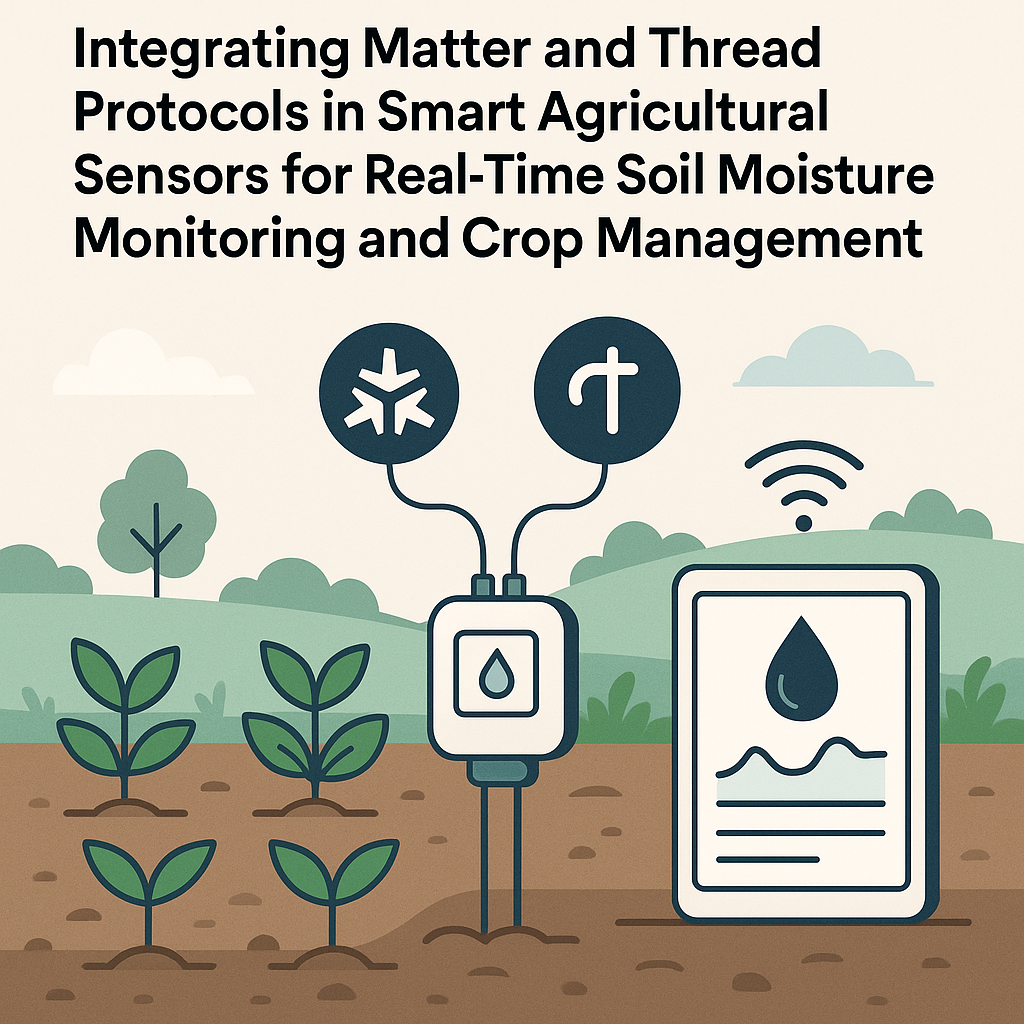Introduction
The intersection of technology and agriculture has opened up new avenues for enhancing productivity and sustainability. One of the most promising advancements is the integration of Matter and Thread protocols in smart agricultural sensors. These technologies enable real-time soil moisture monitoring and effective crop management, significantly contributing to efficient resource usage and improved crop yield.
Understanding Matter and Thread Protocols
Before delving into their application in smart agriculture, it’s vital to understand what the Matter and Thread protocols are.
What is Matter?
Matter is a connectivity standard that aims to unify smart home devices across various ecosystems. It provides a common framework for device communication, ensuring interoperability among devices from different manufacturers.
What is Thread?
Thread is a low-power wireless mesh networking protocol designed specifically for IoT applications. It enables devices to communicate over a network without relying on a central hub, making it ideal for smart agricultural environments.
The Role of Smart Agricultural Sensors
Smart agricultural sensors are critical in monitoring various environmental parameters, including soil moisture levels. Here’s how they contribute to effective crop management:
- Real-time Data Collection: Sensors continuously gather data on soil moisture, temperature, and nutrient levels.
- Improved Decision Making: Access to real-time data allows farmers to make informed decisions on irrigation and fertilization.
- Resource Optimization: Efficient use of water and fertilizers can be achieved, reducing waste and costs.
Benefits of Integrating Matter and Thread in Smart Sensors
The integration of Matter and Thread protocols in smart agricultural sensors offers several advantages:
1. Seamless Connectivity
With Matter’s interoperability, devices from different manufacturers can work together seamlessly. This ensures that farmers can mix and match devices without compatibility issues.
2. Enhanced Network Reliability
Thread’s mesh networking capabilities allow devices to communicate directly with each other, increasing network reliability. In agricultural settings, where devices may be spread out over large areas, this is particularly beneficial.
3. Scalability
As agricultural operations grow, adding more sensors and devices to the network is straightforward. Matter and Thread protocols support a scalable architecture, accommodating more devices without compromising performance.
4. Low Power Consumption
Thread is designed for low-power operation, which is crucial for battery-powered sensors in remote locations. This feature extends the lifespan of sensors and reduces maintenance costs.
Applications in Soil Moisture Monitoring
Integrating these protocols into smart agricultural sensors transforms soil moisture monitoring in several ways:
1. Automated Irrigation Systems
Smart sensors can trigger irrigation systems automatically based on real-time soil moisture data, ensuring crops receive the right amount of water at the right time.
2. Alerts and Notifications
Farmers can receive alerts on their smartphones or other devices when moisture levels drop below a certain threshold, enabling timely intervention.
3. Historical Data Analysis
Data collected over time can be analyzed to identify trends and patterns, helping farmers make long-term decisions about crop rotation and soil management practices.
Challenges and Considerations
While the integration of Matter and Thread protocols in smart agricultural sensors presents numerous benefits, there are challenges that need to be addressed:
- Infrastructure Costs: Initial setup costs for smart sensors and networking infrastructure can be significant.
- Technical Expertise: Farmers may require training to effectively use and maintain these technologies.
- Data Security: As with any IoT technology, ensuring the security of data collected by sensors is crucial to protect sensitive agricultural information.
Conclusion
Integrating Matter and Thread protocols in smart agricultural sensors is a game-changer for real-time soil moisture monitoring and crop management. By leveraging these technologies, farmers can optimize resource use, enhance crop yields, and make informed decisions based on real-time data. Despite some challenges, the benefits far outweigh the drawbacks, paving the way for a more sustainable and efficient agricultural future. As technology continues to evolve, the potential for smart agriculture will only expand, making it an exciting field for innovation and development.



